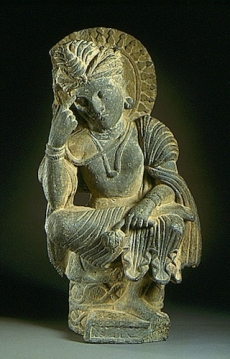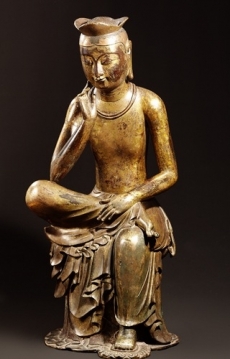NEWS
Korean Buddhism to Celebrate Gandharan Roots in Pakistan
Korea will be among the guests at an international gathering to promote and showcase the culture and treasures of the ancient Gandharan civilization in Pakistan next March. Buddhist monks, scholars, and practitioners from Bhutan, China, Japan, Myanmar, Nepal, and Thailand, as well as Korea and other countries, are expected to attend the event, which is jointly hosted by the Tourism Ministry and the Pakistan Tourism Development Corporation. Visits to sites in Taxila, Swat, and the northern areas will be among the highlights.
Korean Buddhism traces directly back to Gandhara. “Korea’s underlying heritage comes from Buddhism, which comes from Gandhara,” noted Professor Park Kyo-soon of Fatima Jinnah Women University in Rawalpindi, Pakistan, at a press conference organized by the Pakistan Embassy in Korea on 9 November. “In today’s localized world, Gandhara can be a lynchpin for globalizing our culture and Buddhism.” (The Korea Herald) According to historians, Buddhism was introduced to Korea by a Gandharan monk named Maranatha in 384 CE.
Gandhara was the name given to the old kingdom of Peshawar, which includes the Swat Valley, Taxila, Buner, and Bajaur regions of Pakistan as well as the Jalalabad District of present-day Afghanistan. Buddhism, Jainism, Hinduism, and Zoroastrianism existed side by side in the region, which is well known for its Indo-Greek artistic and cultural identity, the legacy of Alexander the Great. The Macedonian king conquered the region in the 4th century BCE, and was succeeded by a number of Indo-Greek kings. Over the centuries it became an entrepôt of trade, both overland and via the sea.
 "Maitreya in Meditation." Gandhara, Pakistan, 3rd–4th century, gray schist. Los Angeles County Museum of Art. From himalayanbuddhistart.wordpress.com
"Maitreya in Meditation." Gandhara, Pakistan, 3rd–4th century, gray schist. Los Angeles County Museum of Art. From himalayanbuddhistart.wordpress.com "Maitreya in Meditation." Korea, National Treasure No. 83, c. 7th century, gilt bronze. National Museum of Korea. From koreajoongangdaily.joins.com
"Maitreya in Meditation." Korea, National Treasure No. 83, c. 7th century, gilt bronze. National Museum of Korea. From koreajoongangdaily.joins.com“What I saw was the [sic] mankind’s first ‘fusion culture,’” recalled Jukgyeong, a Buddhist monk from Bonginsa Temple in Namyangju City, Gyeonggi Province, who visited Gandhara in October 2014. “It was apparent that Gandhara combined different civilizations’ ideologies, cultures and arts to a great degree, as I saw in one artwork the Greek mythological hero Hercules being portrayed as one of the Four Heavenly Kings of Buddhism. . . . It is my hope that we see through these objects of art Buddha’s message: the love of humanity over divinity.” (The Korea Herald)
Gandhara’s Greco-Buddhist art reached China, Korea, and Japan via Central Asia. The UNESCO World Heritage listed Seokguram Grotto, part of Bulguksa Temple in Gyeongju, in Korea’s North Gyeongsang Province, is said to be inspired by Gandharan art. The posture of the Korean gilt-bronze “Maitreya in Meditation,” an example of which is National Treasure No. 83, is also thought to derive from Gandharan images.
“We want to build cultural bridges with the Korean people,” said Pakistani ambassador Zahid Nasrullah Khan with regard to next year’s event. “We want to inform our Korean friends that we have similar cultures, and also thrive on our diversities.” (The Korea Herald)
See more
Pakistan’s Gandhara ruins to receive Korea’s Buddhists (The Korea Herald)
Gandhara to Get Korean Tourists Next Year (Pakistan Defence)














